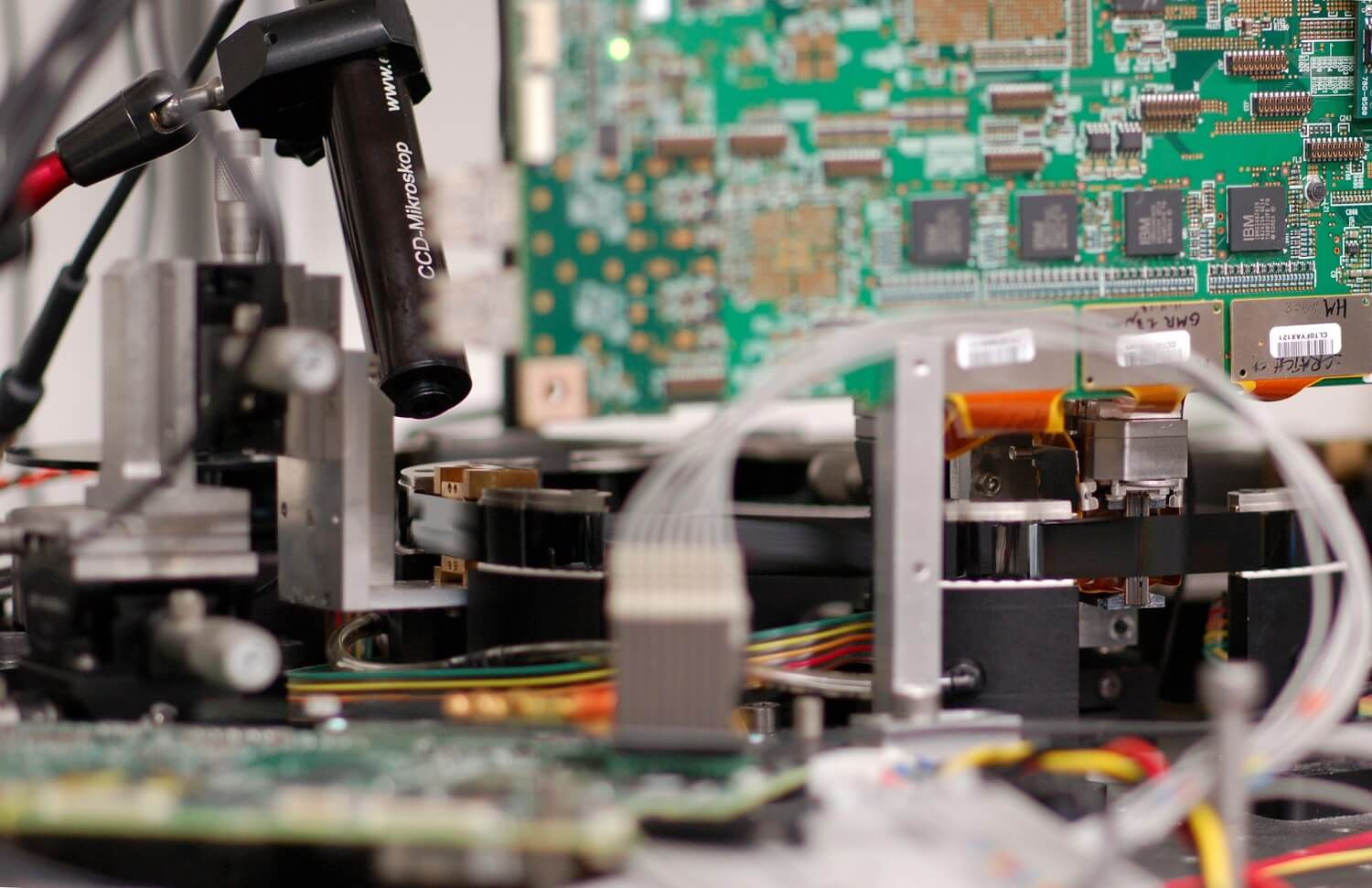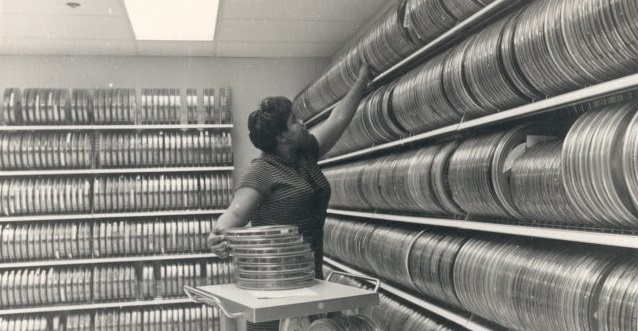"300 million books per kilometer": IBM extends the life of magnetic tape
In early August, researchers from IBM Research, together with Sony Storage Media Solutions, set a new world record, recording 201 GB per square meter. inch of magnetic tape. The thickness of the IBM prototype is only 4.7 micrometers. The new method allows you to save 330 TB of uncompressed data in the palm-sized LTO cartridge. The record volume of data is equivalent to approximately 330 million books on 1098 m of tape. Scientists expect to be able to double the capacity of tapes every two years.
 / Flickr / IBM Research / CC
/ Flickr / IBM Research / CC
Tapes are still used because of the low cost of technology in comparison with a disk for storing large video archives and other types of data. Nevertheless, cloud services are gradually crowding out its predecessor. It is believed that the latter remains to live out his life in the role of a reliable, but archaic backup system, supported by enterprises in case of an emergency. However, IBM employees believe that the latest breakthrough gives new meaning to magnetic tapes and makes them a valuable addition to cloud services.
')
Despite the fact that the cloud offers faster data access and simpler management than tape libraries, the physical properties of magnetic drives are able to add more diverse hardware to the device of modern data centers. New methods of signal processing allow you to read data with a density of 818 thousand bits per inch.
The Sony tape used by IBM is enhanced by applying several thin layers of liquid metal (barium ferrite). IBM technical board member Evangelos Eleftheriou believes that technology has the potential to grow, and it will probably reduce the cost of storing a terabyte. This will make the new recording method practical for “cold” storage in the cloud.
Corporate cartridges of the largest capacity store 15 TB, which is much higher than the volumes of physical disks and flash memory. Compatibility of readers of old formats with new tapes with a higher data recording density in theory can provide an impressive reduction in the risk of data loss.
And although the new technology has a serious potential, Roy Cideciyan, one of the authors of the IBM research article, warns that it is not worth waiting for its speedy mass distribution in data centers. He recalls that the current series of TS1150 tapes, released in 2014, took eight years before crossing the threshold of the laboratory and entering into the sphere of commercial use. Roy says that it will take ten years for the tapes of the new generation.
The applicability of high-density tapes in data centers will be supported by a massive transition of technology to the Linear Tape File System (LTFS) file system. This standard was adopted by the LTO Consortium, which includes IBM, in 2010.
Users can find and extract LTFS data using familiar file search tools. Because of this, according to the chairman of the Data Management Institute, John Toigo, tape backup is the best way to store long-term data from large enterprises and cloud service providers. Especially given the durability and resiliency that technology imparts new coatings of barium ferrite.

/ Wikimedia / NODC / CC
Along with an optimistic scenario, there is an alternative view on the future of magnetic tapes. Clive Longbottom, director of research firm QuoCirca, is more cautious about forecasts . He believes that the possibility of storing a third of a petabyte on a cartridge is amazing, but one should not forget about the risk of physical damage to the carrier, which is quite large in the case of magnetic tape recording technology.
Anyway, as Rich Gadomski, vice president of marketing at Fujifilm Recording Media USA, notes, large investments are being made to expand the use of magnetic tapes. And the historical role of technology as a tool for backing up data is changing to a more active position in the ecosystem of data centers. “It should be expected that the role of the tape will continue to grow as more and more data is stored on it,” he concludes.
Anyway, the future of magnetic drives can be reasoned with optimism, since IBM remains their largest supplier, and employees of the corporation are ready to make forecasts for decades to come. In addition, the Spectra Logic Digital Data Storage Outlook 2017 report states that cloud service providers will continue to use LTO more frequently. IBM is likely to become the only manufacturer of tape drives.
PS A few more materials on the topic of data storage from our blog:
 / Flickr / IBM Research / CC
/ Flickr / IBM Research / CCMagnetic tapes early to write off
Tapes are still used because of the low cost of technology in comparison with a disk for storing large video archives and other types of data. Nevertheless, cloud services are gradually crowding out its predecessor. It is believed that the latter remains to live out his life in the role of a reliable, but archaic backup system, supported by enterprises in case of an emergency. However, IBM employees believe that the latest breakthrough gives new meaning to magnetic tapes and makes them a valuable addition to cloud services.
')
Despite the fact that the cloud offers faster data access and simpler management than tape libraries, the physical properties of magnetic drives are able to add more diverse hardware to the device of modern data centers. New methods of signal processing allow you to read data with a density of 818 thousand bits per inch.
The Sony tape used by IBM is enhanced by applying several thin layers of liquid metal (barium ferrite). IBM technical board member Evangelos Eleftheriou believes that technology has the potential to grow, and it will probably reduce the cost of storing a terabyte. This will make the new recording method practical for “cold” storage in the cloud.
Corporate cartridges of the largest capacity store 15 TB, which is much higher than the volumes of physical disks and flash memory. Compatibility of readers of old formats with new tapes with a higher data recording density in theory can provide an impressive reduction in the risk of data loss.
But do not rush
And although the new technology has a serious potential, Roy Cideciyan, one of the authors of the IBM research article, warns that it is not worth waiting for its speedy mass distribution in data centers. He recalls that the current series of TS1150 tapes, released in 2014, took eight years before crossing the threshold of the laboratory and entering into the sphere of commercial use. Roy says that it will take ten years for the tapes of the new generation.
The applicability of high-density tapes in data centers will be supported by a massive transition of technology to the Linear Tape File System (LTFS) file system. This standard was adopted by the LTO Consortium, which includes IBM, in 2010.
Users can find and extract LTFS data using familiar file search tools. Because of this, according to the chairman of the Data Management Institute, John Toigo, tape backup is the best way to store long-term data from large enterprises and cloud service providers. Especially given the durability and resiliency that technology imparts new coatings of barium ferrite.

/ Wikimedia / NODC / CC
Along with an optimistic scenario, there is an alternative view on the future of magnetic tapes. Clive Longbottom, director of research firm QuoCirca, is more cautious about forecasts . He believes that the possibility of storing a third of a petabyte on a cartridge is amazing, but one should not forget about the risk of physical damage to the carrier, which is quite large in the case of magnetic tape recording technology.
Anyway, as Rich Gadomski, vice president of marketing at Fujifilm Recording Media USA, notes, large investments are being made to expand the use of magnetic tapes. And the historical role of technology as a tool for backing up data is changing to a more active position in the ecosystem of data centers. “It should be expected that the role of the tape will continue to grow as more and more data is stored on it,” he concludes.
Anyway, the future of magnetic drives can be reasoned with optimism, since IBM remains their largest supplier, and employees of the corporation are ready to make forecasts for decades to come. In addition, the Spectra Logic Digital Data Storage Outlook 2017 report states that cloud service providers will continue to use LTO more frequently. IBM is likely to become the only manufacturer of tape drives.
PS A few more materials on the topic of data storage from our blog:
Source: https://habr.com/ru/post/335664/
All Articles